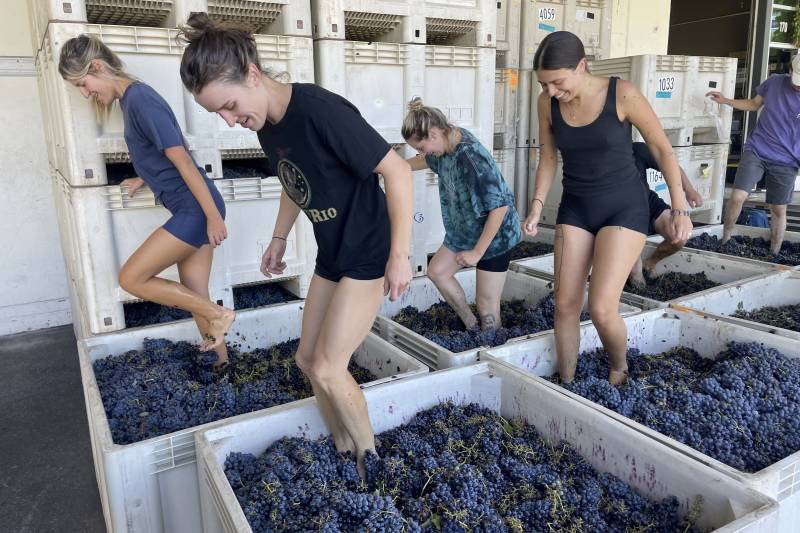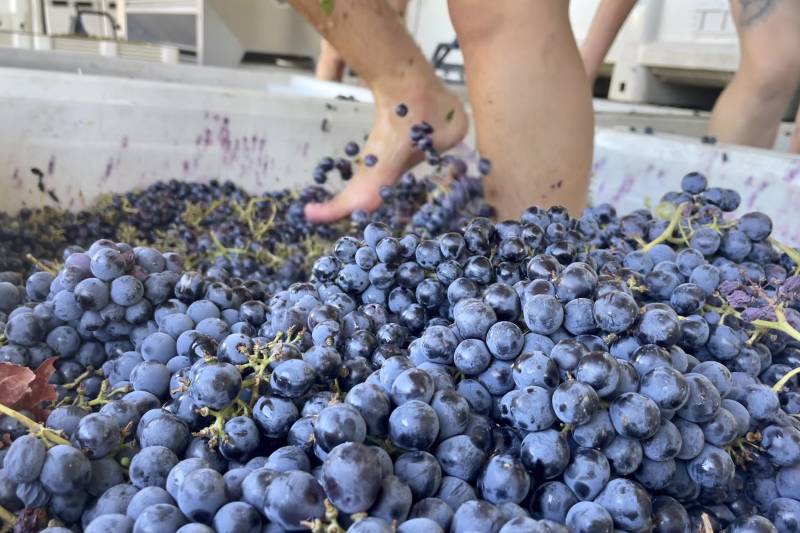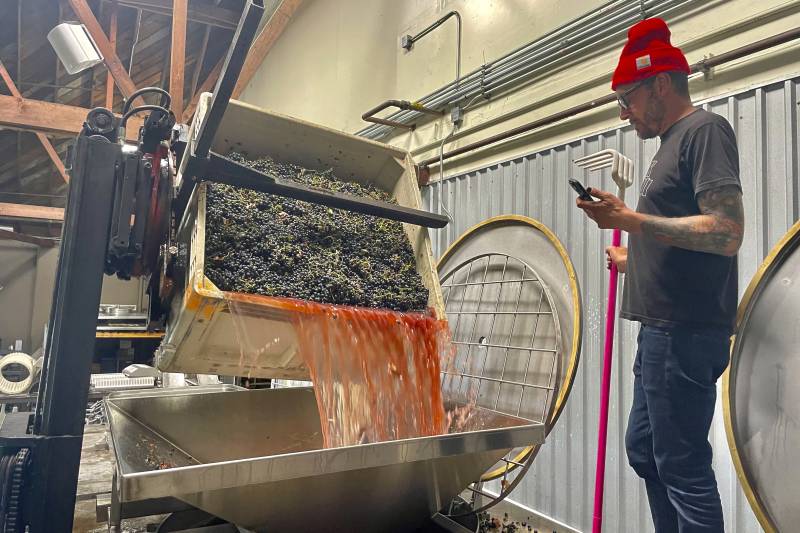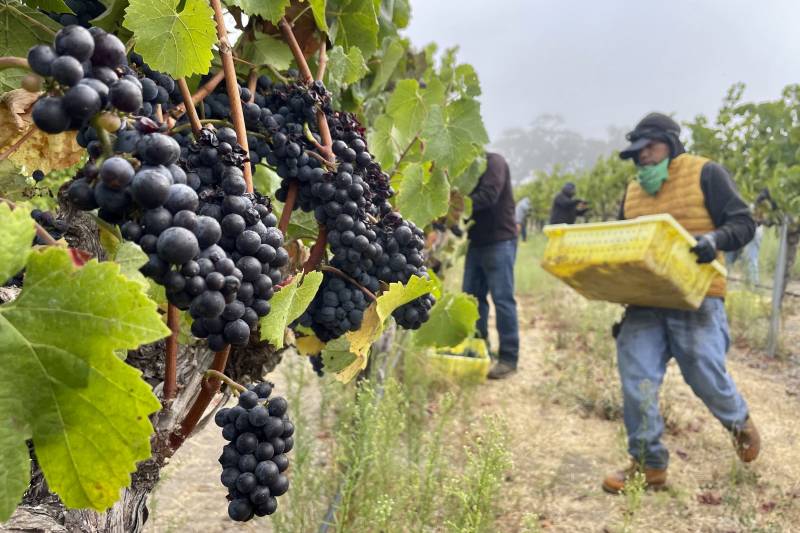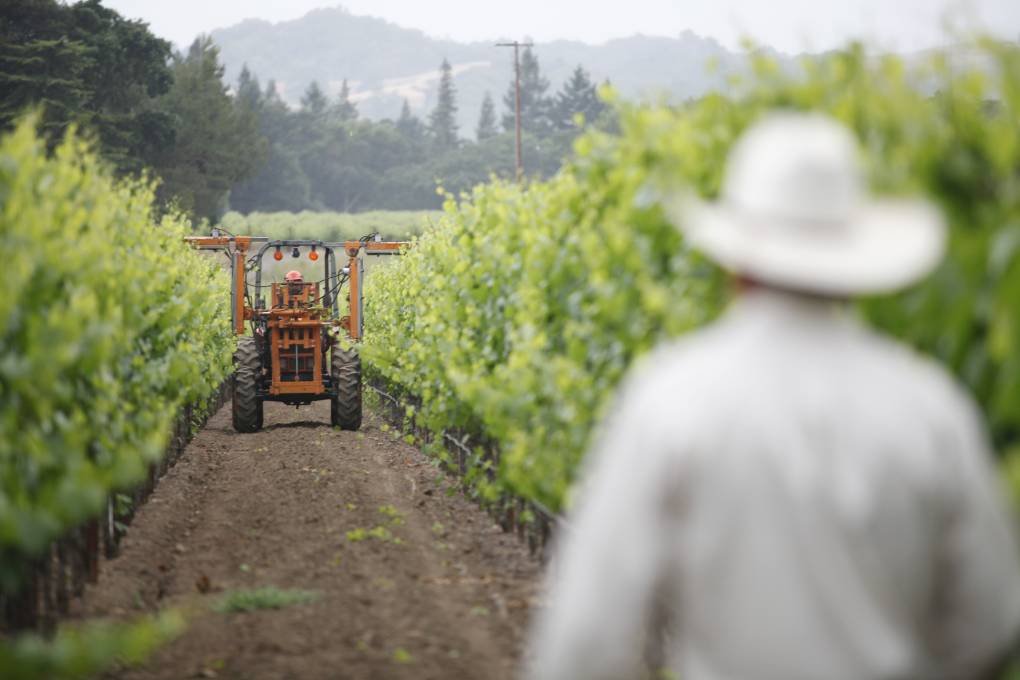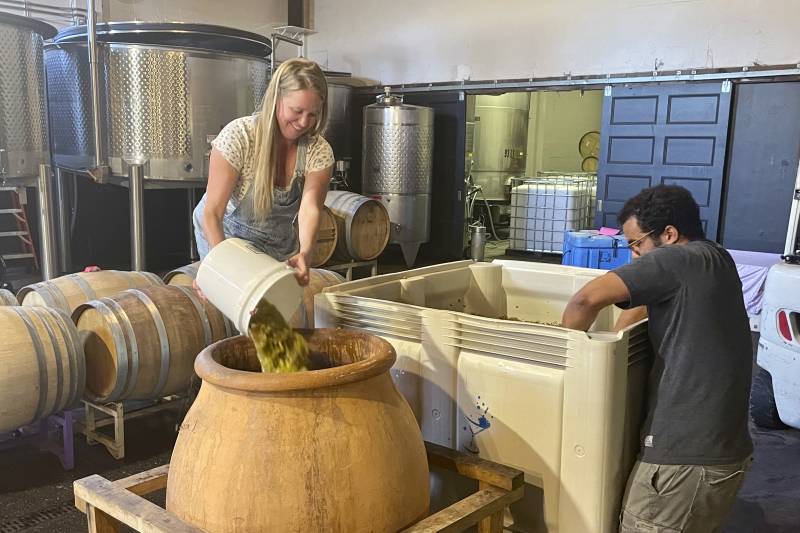Wine made in ancient ways is gaining new fans.
Natural wine — which emphasizes sustainability and minimal processing — is seeing growing interest in the U.S. even though overall wine consumption has been declining since 2015, according to IWSR Drinks Market Analysis, a research firm. While natural and other sustainable wines made up less than 1% of sales in 2021, demand was rising faster than the wine category as a whole, according to alcohol delivery site Drizly.
Generally, natural wine is made with handpicked organic grapes that haven’t been sprayed with herbicides or pesticides. Once they’re crushed — sometimes by foot, the way they were crushed by ancient Romans — they are naturally fermented with no added water, yeast or other ingredients. Some natural winemakers add sulfites, a chemical found naturally in grapes, as a preservative; others don’t. Some filter their wines; others leave them cloudy and full of sediment.
